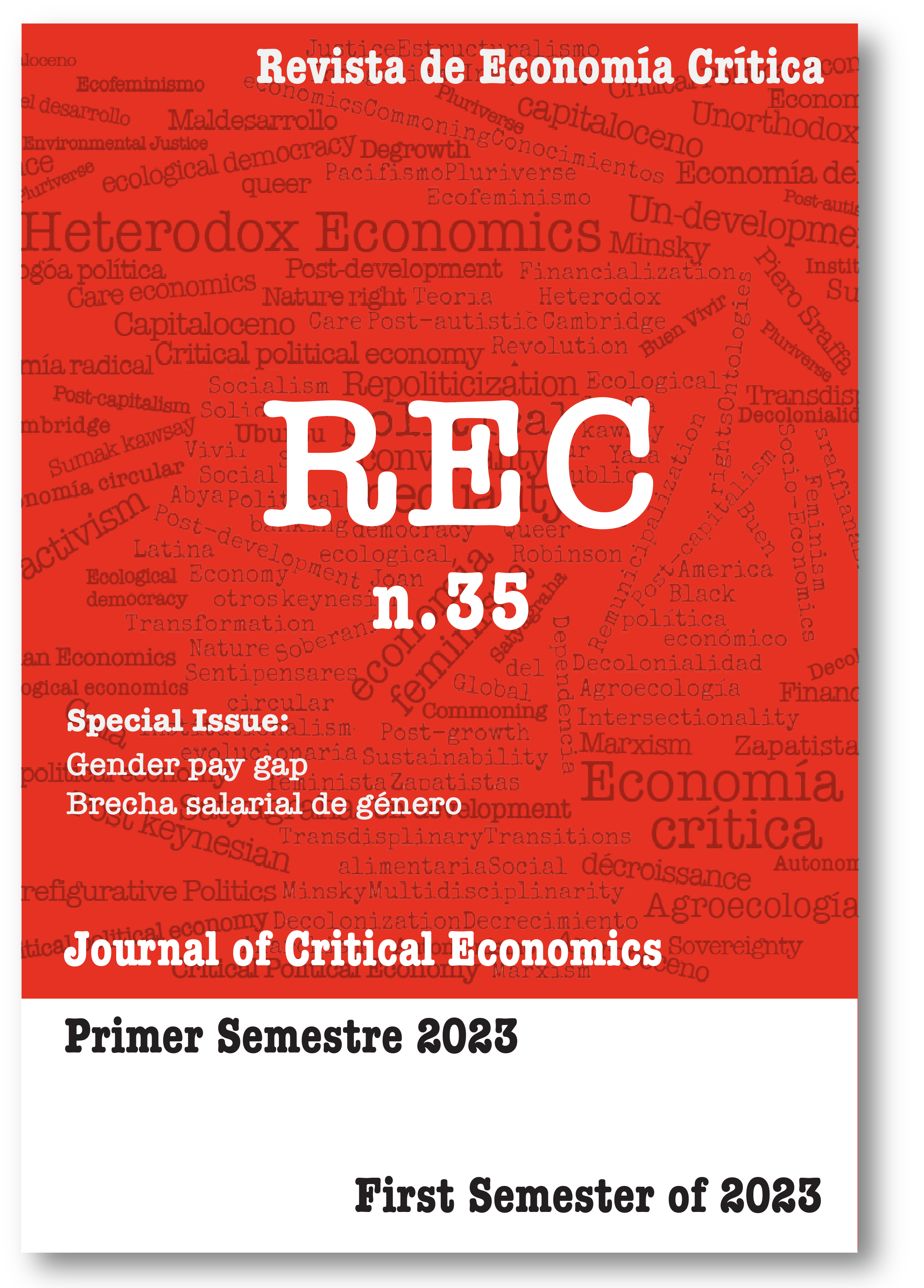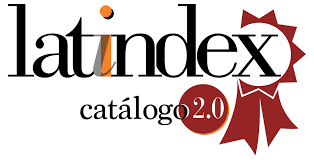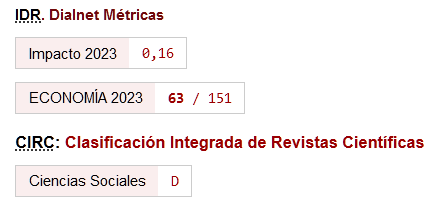Gender salary gap in business management positions in Spain
DOI:
https://doi.org/10.46661/rec.8966Keywords:
Gender pay gap, Wage equation, Firm management, Wage decompositionAbstract
In recent decades, considerable progress has been made in terms of gender equality in the Spanish labor market. However, women still receive significantly lower pay. For example, data from Eurostat indicates that in 2022, the average hourly wage of women was almost 9.4% lower than that of men.
The gender pay gap is the widely used indicator for measuring wage differences between men and women. This is calculated as the percentage difference in wages (annual and hourly, habitually) between men and women, known as the unadjusted pay gap. The adjusted pay gap is calculated by specifying wage equations that allow to control for sociodemographic characteristics, the particular characteristics of workers and their jobs, and econometric estimation methods are used to value both wage differences and a possible discrimination.
This study analyzes the adjusted and unadjusted gender pay gap in managerial positions in Spanish firms using the 2018 Salary Structure Survey. In addition to presenting different estimates of the adjusted pay gap, the Oaxaca-Blinder wage decomposition is applied, which allows for a deeper understanding of gender wage differences. The results show that the adjusted gender pay gap in management positions is 13.5%, which reduces to 8% when controlling for unobservable characteristics of firms, apart from observable personal, job and firm characteristics.
Downloads
References
Aigner, D., & Cain, G. (1977). Statistical theories of discrimination in labor markets. ILR Review, 30(2), 175-187. https://doi.org/10.1177/001979397703000204 DOI: https://doi.org/10.1177/001979397703000204
Altonji, J., & Blank, R. (1999). Race and gender in the labor market. In Handbook of labor economics, Chapter 48, Vol. 3, Part C, 3143 - 3259. https://doi.org/10.1016/S1573-4463(99)30039-0 DOI: https://doi.org/10.1016/S1573-4463(99)30039-0
Anghel, B., Conde-Ruiz, J. I., & Marra de Artíñano, I. (2019). Brechas salariales de género en España. Revista Hacienda Pública Española, 229, 87-119. https://doi.org/10.7866/hpe-rpe.19.2.4 DOI: https://doi.org/10.7866/hpe-rpe.19.2.4
Anker, R. (1997). La segregación profesional entre hombres y mujeres repaso de las teorías. Revista Internacional Del Trabajo, 116(3), 343-370.
Barberà, E., Ramos López, A., & Sarrió Catalá, M. T. (2003). Mujeres directivas, espacio de poder y relaciones de género. Anuario De Psicología, 34(2), 267-278.
Barth, E., Kerr, S. P., & Olivetti, C. (2021). The dynamics of gender earnings differentials: Evidence from establishment data. European Economic Review, 134, 103713. https://doi.org/10.1016/j.euroecorev.2021.103713 DOI: https://doi.org/10.1016/j.euroecorev.2021.103713
Becker, G. S. (1957). The economics of discrimination. The University of Chicago Press.
Becker, G. S. (1962). Investment in human capital: A theoretical analysis. Journal of Political Economy, 70(5), 9-49. https://doi.org/10.1086/258724 DOI: https://doi.org/10.1086/258724
Blau, F. D., & Kahn, L. M. (2017). The gender wage gap: Extent, trends, and explanations. Journal of Economic Literature, 55(3), 789-865. https://doi.org/10.1257/jel.20160995 DOI: https://doi.org/10.1257/jel.20160995
Blinder, A. S. (1973). Wage discrimination: Reduced form and structural estimates. The Journal of Human Resources, 8(4), 436-455. https://doi.org/10.2307/144855 DOI: https://doi.org/10.2307/144855
Campos-Soria, J. A., & Ropero-García, M. Á. (2016). Occupational segregation and the Female-Male wage differentials: Evidence for Spain. Gender Issues, 33(3), 183-217. https://doi.org/10.1007/s12147-015-9148-z DOI: https://doi.org/10.1007/s12147-015-9148-z
Castaño, C., Martín, J. Á., Vázquez, S., & Martínez, J. L. (2010). Female executives and the glass ceiling in Spain. International Labour Review, 149(3), 343-360. https://doi.org/10.1111/j.1564-913X.2010.00090.x DOI: https://doi.org/10.1111/j.1564-913X.2010.00090.x
CEOE, & PwC. (2019). Análisis de la brecha salarial de género en España. Identificando las causas para encontrar las soluciones. Comisión de igualdad y diversidad de la Confederación Española de Organizaciones Empresariales. Link
Cohen, P. N., & Huffman, M. L. (2007). Working for the woman? Female managers and the gender wage gap. American Sociological Review, 72(5), 681-704. https://doi.org/10.1177/000312240707200502 DOI: https://doi.org/10.1177/000312240707200502
Comisión Europea. (2021). 2021 report on gender equality in the EU. Publications Office.
Comisión Nacional del Mercado de Valores. (2021). Presencia de mujeres en los consejos de administración y en la alta dirección de las sociedades cotizadas. https://www.cnmv.es/Portal/Publicaciones/Consejeras_Directivas.aspx
Durán Heras, M. Á. (2017). Los derechos poslaborales. Desiguadad de género, Ruesga Benito, S. M., Suárez Corujo, B., & Gómez Sánchez, V.: ¿Cobraremos las pensiones? Cómo sostener el sistema público de pensiones. Editorial Pirámide. Madrid, 39-67.
EIGE. (2022). Gender equality index 2022: The COVID-19 pandemic and care.
Eurostat. (2022). Gender statistics.
Gagliarducci, S., & Paserman, M. D. (2015). The effect of female leadership on establishment and employee outcomes: Evidence from linked employer-employee data. Research in Labor Economics, (41), 341-372. https://doi.org/10.1108/S0147-912120140000041017 DOI: https://doi.org/10.2139/ssrn.2529356
Grimshaw, D., Fagan, C., Hebson, G., & Tavora, I. (2017). Making work more equal: A new labour market segmentation approach. Manchester, England: Manchester University Press. https://www.manchesteropenhive.com/view/9781526125972/9781526125972.xml; https://doi.org/10.7765/9781526125972 DOI: https://doi.org/10.7765/9781526125972
Hensvik, L. E. (2014). Manager impartiality: Worker-firm matching and the gender wage gap. ILR Review, 67(2), 395-421. https://doi.org/10.1177/001979391406700205 DOI: https://doi.org/10.1177/001979391406700205
Hirsch, B. (2013). The impact of female managers on the gender pay gap: Evidence from linked employer-employee data for Germany. Economics Letters, 119(3), 348-350. https://EconPapers.repec.org/RePEc:eee:ecolet:v:119:y:2013:i:3:p:348-350 https://doi.org/10.1016/j.econlet.2013.03.021 DOI: https://doi.org/10.1016/j.econlet.2013.03.021
Kunze, A. (2017). The gender wage gap in developed countries. IZA Institute of Labor Economics, https://doi.org/10.2139/ssrn.3003909 DOI: https://doi.org/10.2139/ssrn.3003909
Ley Orgánica 3/2007, de 22 de marzo, para la igualdad efectiva de mujeres y hombres. Boletín Oficial del Estado, 71, de 23 de marzo de 2007. https://www.boe.es/eli/es/lo/2007/03/22/3/con
Real Decreto-ley 6/2019, de 1 de marzo, de medidas urgentes para garantía de la igualdad de trato y de oportunidades entre mujeres y hombres en el empleo y la ocupación. Boletín Oficial del Estado, 57, de 7 de marzo de 2019. https://www.boe.es/eli/es/rdl/2019/03/01/6/con
Real Decreto 901/2020, de 13 de octubre, por el que se regulan los planes de igualdad y su registro y se modifica el Real Decreto 713/2010, de 28 de mayo, sobre registro y depósito de convenios y acuerdos colectivos de trabajo. Boletín Oficial del Estado, 272, de 14 de octubre de 2020. https://www.boe.es/eli/es/rd/2020/10/13/901
Real Decreto 902/2020, de 13 de octubre, de igualdad retributiva entre mujeres y hombres. Boletín Oficial del Estado, 272, de 14 de octubre de 2020. https://www.boe.es/eli/es/rd/2020/10/13/902/con
Leythienne, Denis; & Pérez-Julián, Marina (2021). Gender pay gaps in the European Union -a statistical analysis- Publications Office of the European Union. https://doi.org/10.2785/98845
Leythienne, Denis; & Ronkowski, Piotr (2018). A decomposition of the unadjusted gender pay gap using Structure of Earnings Survey data. EUROSTAT
Lips, Hilary. M. (2013). The gender pay gap: Challenging the rationalizations. Perceived equity, discrimination, and the limits of human capital models. Sex Roles: A Journal of Research, 68, 169-185. https://doi.org/10.1007/s11199-012-0165-z DOI: https://doi.org/10.1007/s11199-012-0165-z
Mincer, Jacob (1974). Progress in human capital analysis of the distribution of earnings. NBER Working Papers 0053, National Bureau of Economic Research, Inc. https://doi.org/10.3386/w0053 DOI: https://doi.org/10.3386/w0053
Mincer, Jacob; & Polachek, Solomon (1978). An exchange: The theory of human capital and the earnings of women: Women's earnings reexamined. The Journal of Human Resources, 13(1), 118-134. https://doi.org/10.2307/145305 DOI: https://doi.org/10.2307/145305
Ministerio de Ciencia e Innovación (2021). Científicas en cifras 2021. Observatorio Mujeres, Ciencia e Innovación.
Moral, María J. (2018). Diferencias salariales en el inicio de la expansión económica de 2014. In E. Huerta, & M. J. Moral (Eds.), Innovación y competitividad: Desafíos de la industria española (pp. 315-345). MADRID: Funcas.
Moral, María J. (2021). Brecha salarial de género y tecnología en la industria española. Papeles De Economía Española, (167), 160-174.
Morrison, Ann M.; White, Randall P.; & Van Velsor, Ellen (1987). Breaking the glass ceiling: Can women reach the top of America's largest corporations? Basic Books.
Oaxaca, Ronald (1973). Male-female wage differentials in urban labor markets. International Economic Review (Philadelphia), 14(3), 693-709. https://doi.org/10.2307/2525981 DOI: https://doi.org/10.2307/2525981
OIT (2019) Las mujeres en la gestión empresarial: Argumentos para un cambio. Oficina Internacional del Trabajo, Ginebra.
Phelps, Edmund (1972). The statistical theory of racism and sexism. American Economic Review, 62(4), 659-61.
Santero-Sánchez, Rosa; & Castro Núñez, Belén (2022). Pursuing equal pay for equal work: Gender diversity in management positions and the gender pay gap throughout the wage distribution. BRQ Business Research Quarterly, https://doi.org/10.1177/23409444221125239 DOI: https://doi.org/10.1177/23409444221125239
Rubery, Jill; & Grimshaw, Damian (2015). The 40-year pursuit of equal pay: A case of constantly moving goalposts. Cambridge Journal of Economics, 39(2), 319-343. https://doi.org/10.1093/cje/beu053 DOI: https://doi.org/10.1093/cje/beu053
Rute Cardoso, Ana; & Winter-Ebmer, Rudolf (2010). Female-led firms and gender wage policies. ILR Review, 64(1), 143-163. https://doi.org/10.1177/001979391006400107 DOI: https://doi.org/10.1177/001979391006400107
Tajfel, Henri; & Turner, John C. (1979). An integrative theory of intergroup conflict. The Social Psychology of Intergroup Relations, 33-47.
Theodoropoulos, Nikolaos; Forth, John; & Bryson, Alex (2022). Are women doing it for themselves? Female managers and the gender wage gap. Oxford Bulletin of Economics and Statistics, 84(6), 1329-1355. https://doi.org/10.1111/obes.12509 DOI: https://doi.org/10.1111/obes.12509
Vega Catena, Pedro Jesus; Santero Sánchez, Rosa; Castro Núñez, Belén; & Gómez Gómez, Nuria Elena (2016). Participación femenina en puestos directivos y desigualdad salarial: un análisis en el mercado laboral español. Estudios De Economía Aplicada, 34(1), 155-178. https://doi.org/10.25115/eae.v34i1.3011 DOI: https://doi.org/10.25115/eae.v34i1.3011
Downloads
Published
How to Cite
Issue
Section
License
Copyright (c) 2023 Lidia de Castro, Víctor Martín, Rosa Sandero-Sánchez, Belén Castro

This work is licensed under a Creative Commons Attribution 4.0 International License.
This licence allows third parties to share (copy and redistribute the material in any medium or format) and adapt (remix, transform and create from the material for any purpose, including commercial purposes), provided that authorship and first publication in this journal (The Journal, DOI of the work) is acknowledged, a link to the licence is provided, and it is stated whether changes have been made to the work.







